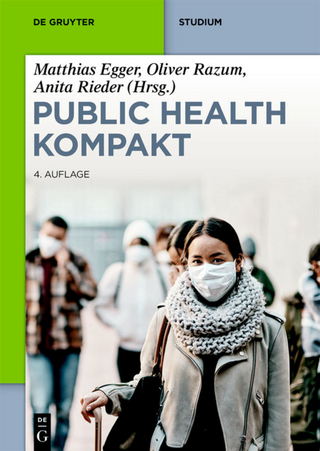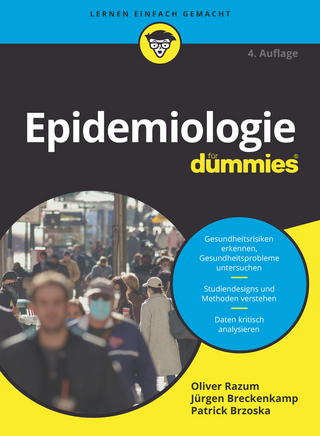
Epidemiological Studies
Cambridge University Press (Verlag)
978-0-521-00939-3 (ISBN)
Following on in the footsteps of its acclaimed and popular predecessor, this new edition builds on the successful features that engaged readers of the first edition: it explains the principles and practice of epidemiology and serves as a handbook for those who wish to do epidemiology; it uses relevant exercises and examples, taken from real life, to illustrate how to set up a study; it aims to help produce valid results that will satisfy grant bodies, ethical committees and journal editors; ultimately it bridges the gap between theory and practice. By making the subject so easily accessible, it will be an excellent introduction for anyone who is training in epidemiology and public health, and for all those involved in medical research. This edition includes numerous improvements and several new chapters which will further enhance its appeal.
Professor Silman is Director of the internationally renowned Arthritis Research Campaign's Epidemiology Research Unit and has considerable expertise in all aspects of epidemiological studies. He has achieved worldwide recognition in this field, has published over 300 papers and lectured widely. In addition he has taught on several courses on epidemiological methods and analysis both for those starting out research and those at a more advanced level. He is currently Vice Chairman of the Epidemiology and Health Sciences Research sub-panel for the United Kingdom's University research assessment exercise. DOB: 4.12.51. Professor Macfarlane holds the Chair in Epidemiology within the School of Epidemiology and Health Sciences at the University of Manchester. He was previously Senior Lecturer within the Arthritis Research Campaign's Epidemiology Unit also at the University of Manchester and Deputy Director of the Division of Epidemiology and Biostatistics at the European Institute of Oncology in Milan. He has authored approximately 100 peer-reviewed scientific articles, book chapters and reviews. He has lectured widely on Chronic Disease Epidemiology and taught on several courses.
Part I. Introduction: 1. Scope of epidemiological enquiry and overview of main problem areas; Part II. Measuring the Occurrence of Disease: 2. Which measure of disease occurrence?; 3. Comparing rates: between and within populations; Part III. Studying Associations between Risk Factors and Disease: 4. Which type of study?; 5. Which measure of association?; Part IV. Selection of Populations and Samples to Study: 6. Studies of disease occurrence I: identification of the population; 7. Studies of disease occurrence II: assessing disease status in study populations; 8. Studies of disease causation I: Selection of subjects for case-control studies; 9. Studies of disease causation II: Selection of subjects for cohort (longitudinal) studies; Part V. Information from Epidemiological Studies: 10. Collecting information; 11. Obtaining valid information; 12. Repeatability; 13. Maximising participation; 14. Conducting a pilot study; Part VI. Analysis and Interpretation of Epidemiological Data: 15. Preparation of survey data for statistical analysis; 16. Introductory data analysis I: descriptive epidemiology;17. Introductory data analysis II: analytical epidemiology; 18. Confounding; 19. Bias; Part VII. Other Practical Issues: 20. Ethical issues in epidemiology; 21. The costs of epidemiological studies; Index.
| Erscheint lt. Verlag | 6.6.2002 |
|---|---|
| Zusatzinfo | Worked examples or Exercises; 20 Tables, unspecified; 20 Line drawings, unspecified |
| Verlagsort | Cambridge |
| Sprache | englisch |
| Maße | 176 x 247 mm |
| Gewicht | 415 g |
| Themenwelt | Studium ► Querschnittsbereiche ► Epidemiologie / Med. Biometrie |
| ISBN-10 | 0-521-00939-1 / 0521009391 |
| ISBN-13 | 978-0-521-00939-3 / 9780521009393 |
| Zustand | Neuware |
| Informationen gemäß Produktsicherheitsverordnung (GPSR) | |
| Haben Sie eine Frage zum Produkt? |
aus dem Bereich


